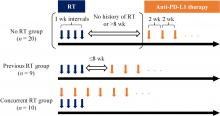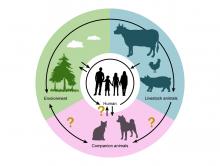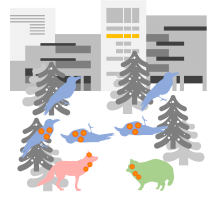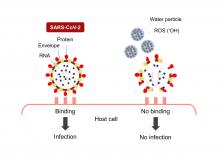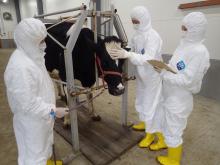Medicine & Healthcare Veterinary medicine
News
08 May 2023
Osaka Metropolitan University scientists investigated the prevalence of antimicrobial resistant bacteria in 678 bacterial isolates from 428 companion dogs and 74 companion cats at the Veterinary Medical Center, Osaka Metropolitan University. Two E. coli strains have both a mobile colistin-resistant mcr gene and a third-generation cephalosporin-resistant blaCTX gene. One of these strains, which is found in a dog, was resistant to both colistin and third-generation cephalosporins.
05 Jan 2023
Researchers at Hokkaido University have revealed the effects of high pathogenicity avian influenza virus infection on an Ezo red fox and a Japanese raccoon dog, linking their infection to a recorded die-off of crows.
17 Jun 2022
A research group led by Osaka Metropolitan University and Panasonic Corporation Living Appliances and Solutions Company discovered how nano-sized electrostatic atomized water particles disinfect SARS-CoV-2. The nano-sized electrostatic atomized water particles developed by Panasonic Corporation have an electron rich nano-sized water shell that contains reactive oxygen species. The researchers showed that the water particles damage the viral envelope, protein, and RNA. They also revealed that the damaged virus did not bind to host cells. These phenomena are considered the main inactivation mechanism of the nano-sized electrostatic atomized water particles on SARS-CoV-2.
24 Feb 2022
Whale and dolphin post-mortem imaging could breathe new life into marine conservation.
22 Apr 2021
Scientists have shown that the biological molecule PD-L1 is a potential target for the treatment of metastasized oral malignant melanoma in dogs.
23 Jan 2020
West Nile virus (WNV) inhibits autophagy — an essential system that digests or removes cellular constituents such as proteins — to induce the aggregation of proteins in infected cells, triggering cell death and brain inflammation (encephalitis), according to Hokkaido University researchers.
02 Aug 2019
Scientists have succeeded in reducing levels of the bovine leukemia virus (BLV) in cows with severe infections by combining an immune checkpoint inhibitor and an enzyme inhibitor. The finding could be utilized to control other diseases in cattle, and perhaps in humans someday.
Events
Sorry, nothing coming up for this discipline
Researchers
Nguyen Huu Nghia is the Director of the Center for Environment and Disease Monitoring in Aquaculture (CEDMA) at the Research Institute for Aquaculture No.1 (RIA1) under Vietnam’s Ministry of Agriculture and Rural Development. He has co-managed various research efforts in Vietnam aquaculture as well as published recent research into the use of nanobubbles.
Dr. Van was previously the Director of the Research Institute for Aquaculture No.1 (RIA1) under Vietnam’s Ministry of Agriculture and Rural Development. She has extensive expertise in aquatic animal health and aquaculture safety management.
Professor St-Hilaire is associate head and professor at the Department of Infectious Diseases and Public Health, City University of Hong Kong (CityU). She has extensively researched fish nutrition and diseases, including treatment efficacy, and has helped investigate fish disease outbreaks.
Mangala Gunatilake is a veterinarian and professor at the Department of Physiology, Faculty of Medicine, University of Colombo, Sri Lanka.
Giants in history
In 1915, Koichi Ichikawa along with pathologist Katsusaburo Yamagiwa became the first to prove that chronic exposure to chemicals can cause cancer.


